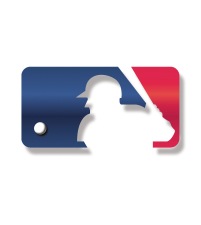 The first couple of months of the new year are my standard time to review the content and features of BaseballGB and to plan for the upcoming season.Â
The first couple of months of the new year are my standard time to review the content and features of BaseballGB and to plan for the upcoming season.Â
One of the tasks I’m working on is reviewing and updating my Baseball Basics for Brits series. The stats show that this is one of the most frequently accessed parts of the site, not least because the BBC website kindly links to it on their baseball page. It’s always been an objective of this website to encourage more Brits to take an interest in the sport and having a series that explains the basics in a way specifically written for a British audience is part of this.
I’m going to be updating the first four volumes one per week over the next month.
Volume 1 focuses on how the MLB season is structured. There haven’t been many changes relating to this since the guide was originally published, although some amendments might be needed in the next couple of years.Â
I’ll definitely need to update the list of teams next year to take into account the Florida Marlins being renamed as the Miami Marlins as part of their move to a new ballpark. The sections on the leagues, divisions and post-season will also need to be rewritten if potential changes to them are actually introduced. It looks almost certain that the post-season will be expanded to ten teams in the near future, maybe for the 2012 season, while the recent discussions in regard to a potential realignment of the leagues and divisions appear to be at the very early stages and may not come to anything for the time being at least.Â
What has changed? Well, it’s no longer strictly accurate for me to state that the regular season runs from April to September as the 2011 season will start on 31 March. It’s a minor point on its own, but it deserves a mention for being part of the wider attempt to stop the MLB season extending into November, something that I pick up again in the post-season section.Â
People often use ‘October’ as a reference to the play-offs (‘playing in October’, ‘October baseball’ etc) so I’m now able to explain that without the caveat that the postseason can actually stretch into November (and, if we’re being really picky, that the regular season could stretch into October).
I’ve also updated the World Series section to note that home field advantage goes to the representative of the league that won the mid-season All Star Game, a point I had failed to include initially. Again, on its own that was a very minor oversight, but it does have a greater consequence in the form of explaining the World Series schedule as a whole.Â
There have been a few minor tweaks here and there to the wording; however I haven’t updated my example of how the regular season standings are worked out (games back, elimation numbers etc). I spent quite a bit of time choosing the 2007 example because it covers all of the bases and I didn’t feel the work involved in finding another similarly complete example from the 2010 season and completely re-writing that section was really necessary.
The one section in the volume that still isn’t quite as succinct and easy to understand as I would like is the explanation of how a team’s schedule is composed. My defence is that there isn’t a succinct and easy-to-understand way of explaining it properly.
I’m aware that most British sports fans are accustomed to straight-forward schedules (e.g. playing every other team in the league once at home and once away). Not only does the unbalanced schedule mean this isn’t the case in MLB, there also isn’t a strict equation that defines a team’s schedule in any given year either.Â
Aside from playing 18 interleague games (unless you’re one of the National League teams playing in an NL-only series) and 18 games each against each of your division rivals (unless you’re in the AL West, where you play 19 – you see, even these two ‘absolutes’ are not absolute at all) the specific number of games you play against the rest of the teams isn’t the same. For example, an AL East team can play 8 games against one AL Central team and 6 games against another.
I’ve continued with my previous approach of explaining the main parts to it and then providing an example of one team’s schedule, in this case replacing the Boston Red Sox’s 2007 season with the Philadelphia Phillies’ 2010 season. Hopefully the revised wording makes the topic a little easier to understand.


2 comments
Whilst I know about the rules of the game, having played for a fair number of years (!) I am intrigued to know why MLB seems to be the only pro sport organisation in North America that utilises levels below the top (the minors).
For example in the NFL draft picks can, and do, become starters in their rookie season. Some bust, some do well. Similarly in the NBA players are drafted straight out of high school into the “big leagues” (think Kobe Bryant).
Not sure about NHL?
Yet in MLB draftees are rarely, if ever, sent straight into the top level of the organisation instead have to ‘develop’ in the minors before making it to the bigs, if at all!
Yes there are exceptions (Strasburg), but I’ve never found out why.
Is it that there is an overabundance of top quality players so only the absolute best make it, is it that the level of play is much greater, or is that draftees simply aren’t ready?
Hi Paul
That’s a very good question.
My theory (which might be wrong!) is that the overall quality of play in both high school and college baseball simply isn’t to the same level that you see with NFL and basketball (perhaps because more athletes get pushed towards the other sports). Certainly the profile of high school/college baseball is far lower than in those two sports.
The talent that can make it to the Majors therefore isn’t tested as much, meaning that players don’t develop at the same rate. A top high school pitcher for example can blow his competition away with a quality fastball, so he isn’t pushed in a competitive environment to improve his command, develop secondary pitches etc.